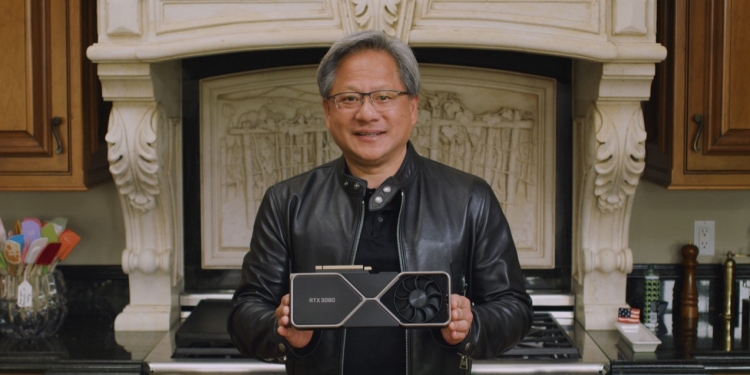Nvidia has taken the wraps off its new GeForce RTX 30 series graphics cards. The new cards which include the RTX 3090, RTX 3080 and RTX 3070 are based on Nvidia’s new Ampere architecture.
Across the board, Nvidia’s new offerings promise to offer a big leap in performance over the previous RTX 20 series and will be the company’s first 7nm GPUs. They will also take advantage of real-time ray tracing and Nvidia’s DLSS (Deep Learning Super Sampling) AI rendering technology that is said to increase output resolution.
Pricing and availability
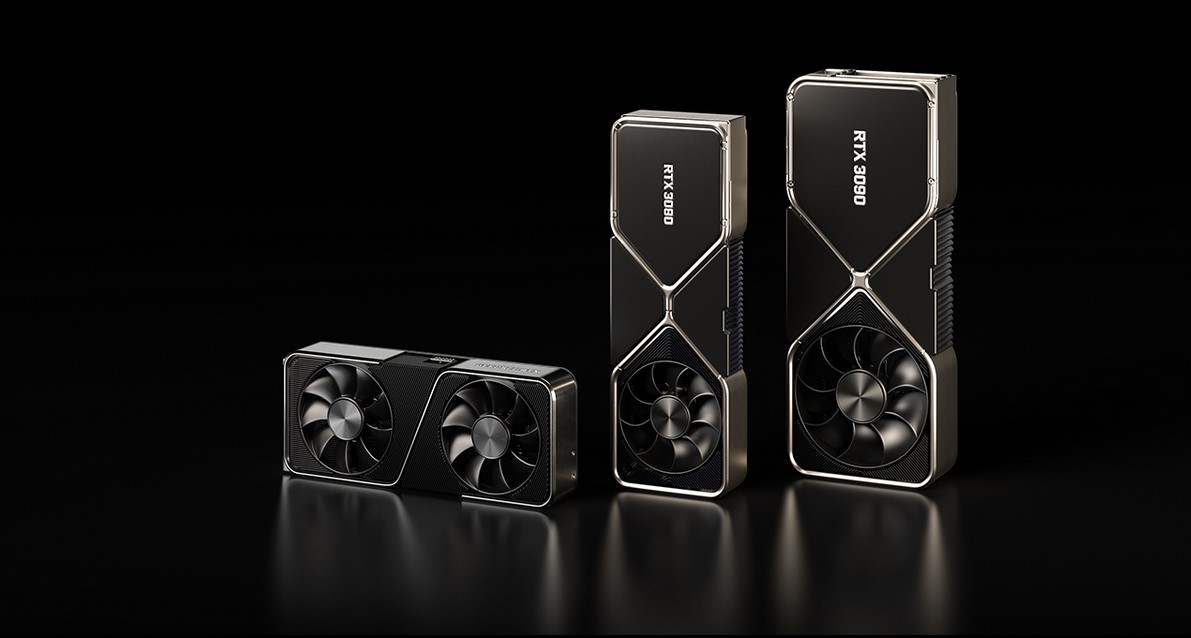
PC gamers won’t have to wait long to get their hands on the new RTX 30 series GPUs as two out of the three are arriving this month. Surprisingly, Nvidia has already announced the price and availability of the new GPUs in Malaysia. Here is the list:
Nvidia GeForce RTX 3090 (available 24 September) – from RM7,208
Nvidia GeForce RTX 3080 (available 17 September) – from RM3,360
Nvidia GeForce RTX 3070 (available in October) – from RM2,399
Generally, the Malaysian prices of the new RTX30 GPUs are higher than the prices in the U.S. We are looking at around differences between RM329 to RM992.
But if you are not daunted by the price tags of these graphics card, you can leave your details at Nvidia’s website and get notified when your chosen GPUs are available for sale in Malaysia.
RTX 3090
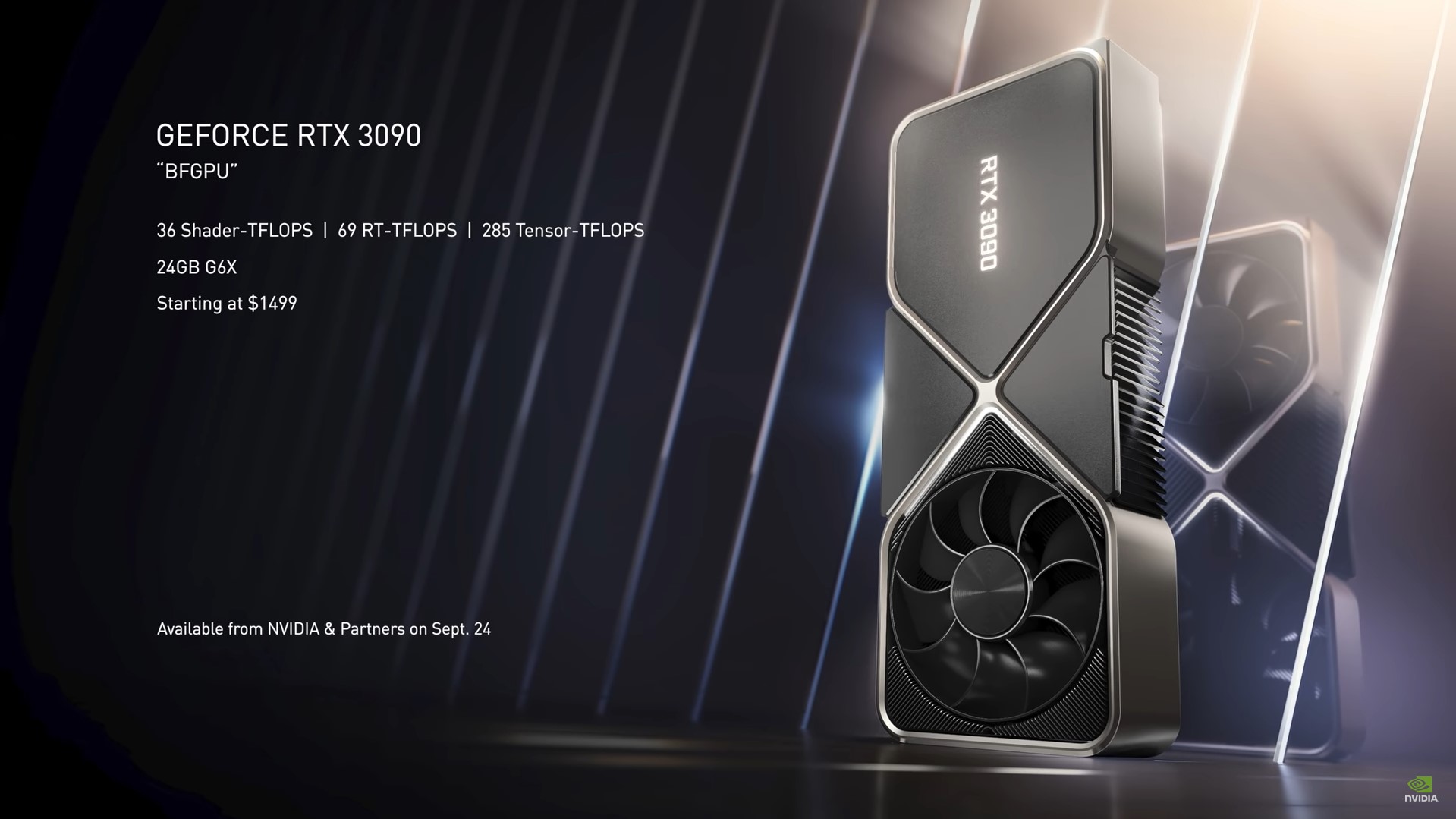
Leading the pack is Nvidia’s new top-of-the-line RTX 3090 GPU that it claims is the “world’s first 8K gaming GPU”. How powerful is it? According to the company, the RTX 3090 is capable of offering 60fps gaming experience at 8K resolutions. Adding to that, the card comes with 8K HDR ShadowPlay and HDMI 2.1 support.
Physically, the RTX 3090 is a massive card that measures 313mm in length, which is 28mm longer than the RTX 3080. Instead of the usual two slots most GPUs occupy, the RTX 3090 occupies three slots which means you may need a bigger case to accommodate this beast.
Nvidia boasts the card comes with 10,496 CUDA cores combined with a 1.70 GHz boost block and 24GB of GDDR6X memory.
When it comes to performance, the RTX 3090 is stated to be 50% faster than the Titan RTX and it will need a 750-watt power supply though the card is expected to use around 350 watts of power. Despite all that power, the included silencer makes Nvidia’s flagship GPU 10 times quieter than the Titan RTX graphics card.
RTX 3080
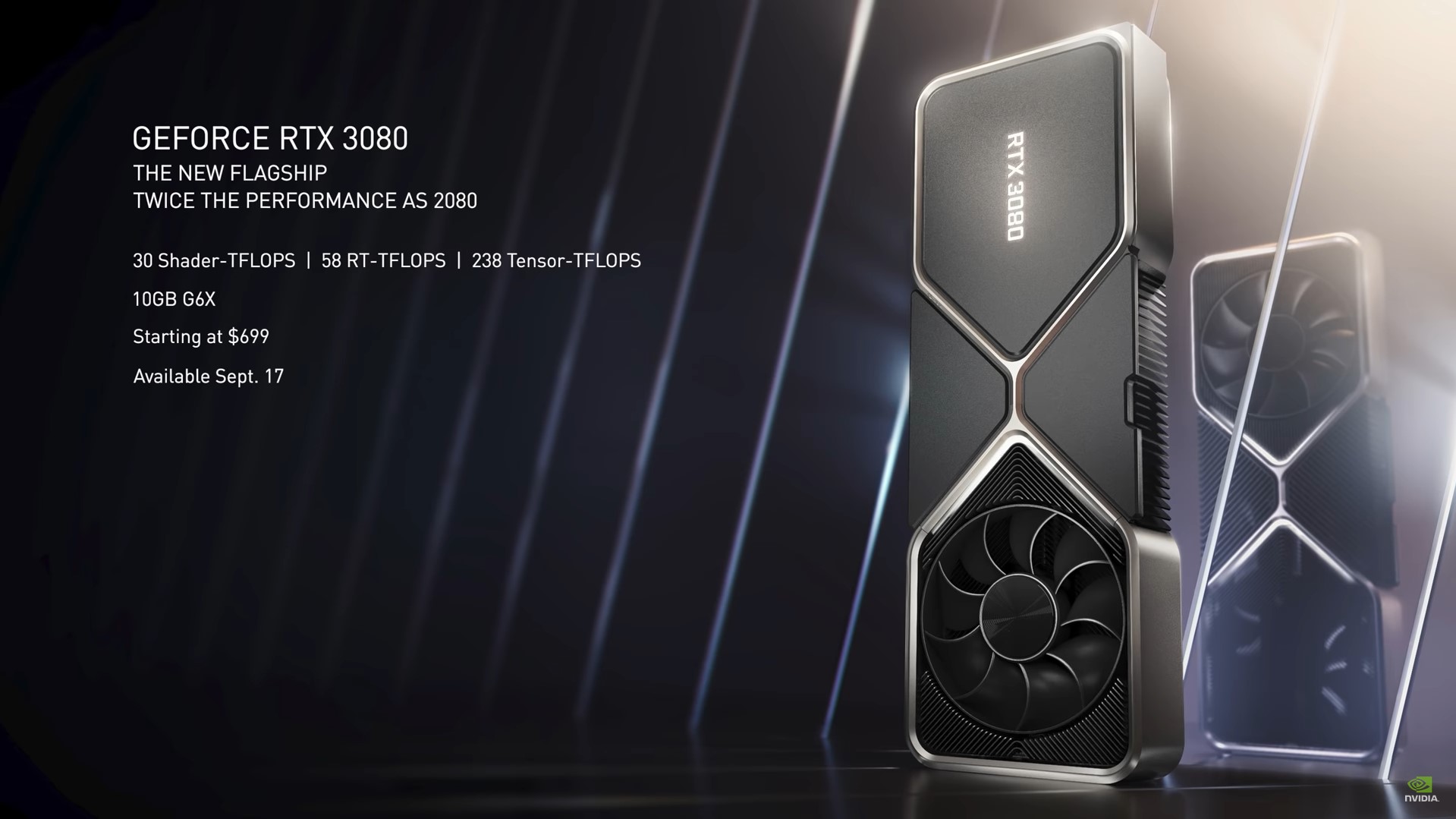
The RTX 3080 was initially revealed by Nvidia as its new flagship GPU before they sneakily supplanted it with the RTX 3090 towards the end of the presentation. According to Nvidia, the RTX 3080 is said to offer up to two times the performance of the previous generation RTX 2080 and is even quicker than the RTX 2080 Ti. The card will come with 10GB of GDDR6X memory and 8,704 CUDA cores along with a 1.71GHz boost clock.
The main highlight of the new GPU is its new thermal design. It now uses a pennant-shaped board combined with a new cooling shroud. The card also has a dual-fan setup that is stated to improve airflow by more than 55% while offering quieter and more efficient cooling. In addition to that, Nvidia is using a bracket exhausting front fan combined with a flow-through rear fan.
These new cooling solutions on the RTX 3080 are said to improve airflow and overcome constraints of the cooling solutions used on the RTX 2080.
RTX 3070
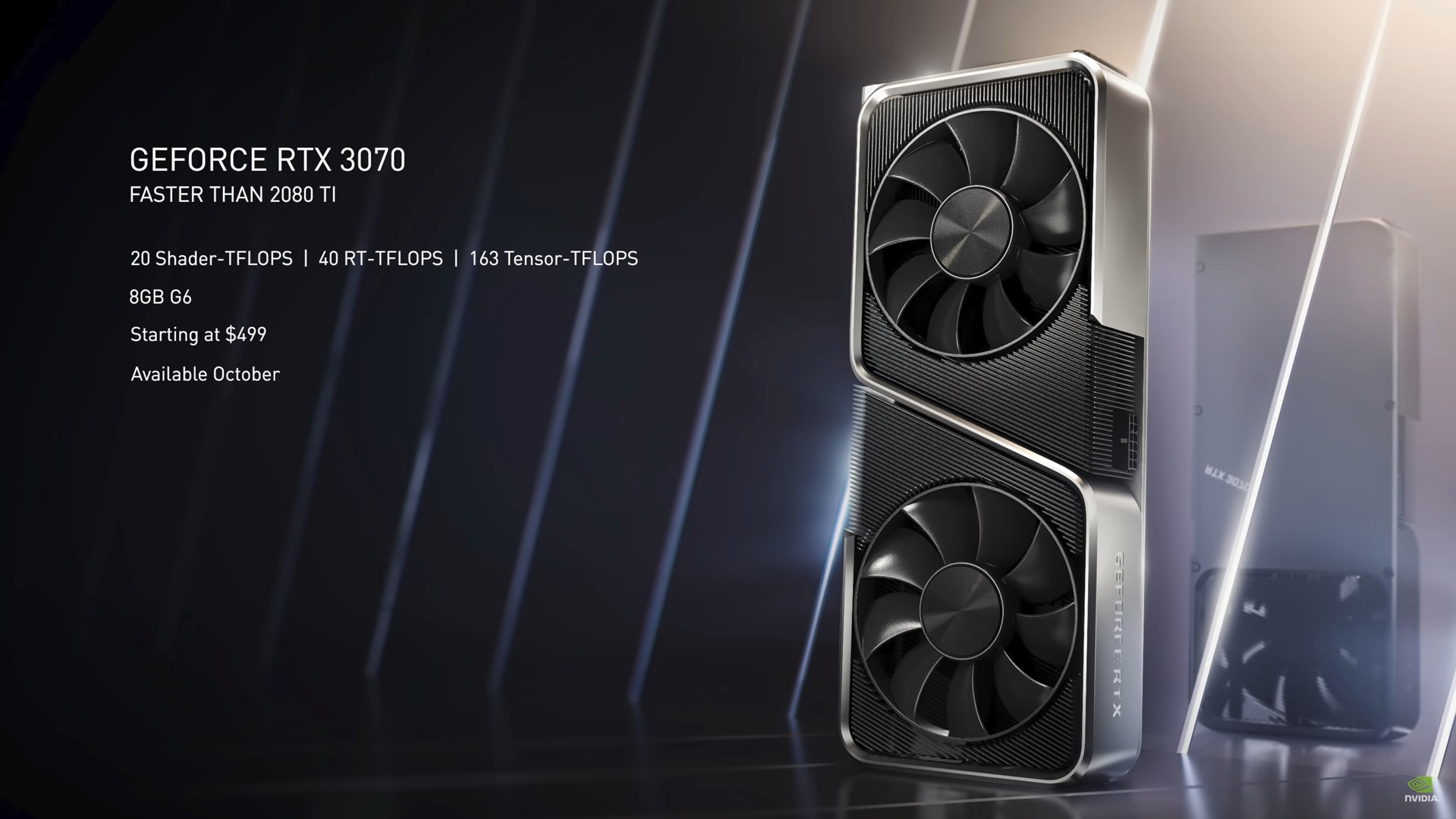
Nvidia has not forgotten PC gamers on a budget. Though it costs a lot less than its higher-end brethren, the RTX 3070 is no slouch when it comes to gaming.
Despite this being the budget model, the RTX 3070 outmatches the old 2018 flagship GPU the RTX 2080 Ti in most of its specs. Even more impressive is the fact that it offers better performance at almost half of the RTX 2080 Ti price at the time of its launch.
Adding to that, gamers can expect a performance bump in the GPU that puts it above the GTX 1080 Ti and GTX 1080 cards. While you won’t be playing games at 4K, this GPU should at least be able to comfortably game at 1440p resolution.
The new RTX 3070 is set to use a similar cooling solution to the RTX 3080 and Nvidia said it will benefit from improved thermals and quieter operation. Specs-wise the card uses 5,888 CUDA cores combined with a 1.71GHz boost clock and 8GB of GDDR6 memory.
[SOURCE]

